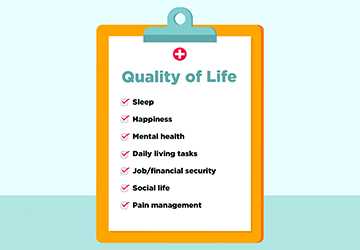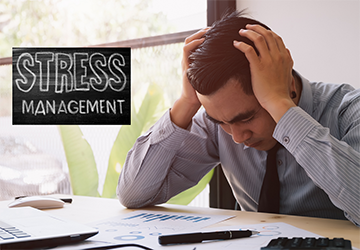Chronic pain can significantly impact the quality of life, affecting physical and emotional well-being. Managing chronic pain requires a comprehensive approach that addresses the various aspects of life affected by persistent discomfort. This guide explores strategies to help individuals effectively manage chronic pain for a better quality of life.

1. Seek Professional Medical Guidance:
The first step in managing chronic pain is to consult with a healthcare professional. A thorough physician or pain specialist assessment can help identify the underlying causes of pain and establish an appropriate treatment plan; this may involve diagnostic tests, imaging studies, and a detailed medical history to understand the specific nature of the pain.
Medical interventions may include:
● Medications: Prescription or over-the-counter medications to manage pain and inflammation.
● Physical therapy: Exercises and techniques to improve flexibility, strength, and mobility.
● Interventional procedures: Injections or nerve blocks to target specific sources of pain.
● Counseling or psychotherapy: Addressing the emotional aspects of chronic pain and developing coping strategies.
2. Implement a Multidisciplinary Approach:
Chronic pain often requires a multidisciplinary approach that addresses physical, psychological, and lifestyle factors. Collaborating with a team of healthcare professionals, such as physical therapists, psychologists, and pain management specialists, can provide a holistic perspective on pain management.
Components of a multidisciplinary approach:
● Physical therapy: Targeted exercises to improve posture, strength, and flexibility.
● Psychological support: Counseling or therapy to address the emotional impact of chronic pain and develop coping strategies.
● Nutritional guidance: A balanced diet to support overall health and manage inflammation.
● Occupational therapy: Strategies to adapt daily activities and reduce strain on the body.
3. Incorporate Pain-Relief Exercises:
Regular, gentle exercises can relieve pain by improving circulation, flexibility, and muscle strength. However, it's crucial to choose exercises appropriate for the individual's condition and start gradually, avoiding activities that exacerbate pain.
Practical pain-relief exercises include:
● Low-impact aerobic exercises: Walking, swimming, or stationary cycling can improve cardiovascular health without placing excessive strain on joints.
● Stretching exercises: Gentle stretching can help maintain flexibility and reduce muscle tension.
● Strengthening exercises: Targeted strength training can stabilize joints and support proper body mechanics.
4. Practice Mind-Body Techniques:
Mind-body techniques focus on the interconnectedness of the mind and body, promoting relaxation and reducing stress, which can positively impact chronic pain. Mindfulness, meditation, and deep breathing practices can help manage pain perception.
Mind-body techniques for pain management:
● Mindfulness meditation: Focusing on the present moment and observing sensations without judgment.
● Progressive muscle relaxation: Systematically tensing and then relaxing different muscle groups to release tension.
● Deep breathing exercises: Slow, diaphragmatic breathing to induce relaxation and reduce stress.
5. Prioritize Adequate Sleep:
Quality sleep plays a crucial role in managing chronic pain. Establishing good sleep hygiene practices and addressing sleep disturbances can contribute to overall well-being and pain management.
Tips for better sleep:
● Maintain a consistent sleep schedule: Go to bed and wake up simultaneously every day.
● Create a sleep-friendly environment: Ensure a comfortable mattress, a darkened room, and a cool temperature.
● Limit screen time before bedtime: Reduce exposure to electronic devices that emit blue light, which can interfere with sleep.
6. Manage Stress and Emotional Well-Being:
Chronic pain is often associated with heightened stress levels, which can exacerbate the perception of pain. Developing effective stress management techniques and addressing emotional well-being are integral components of a comprehensive pain management strategy.

Stress management strategies:
● Cognitive-behavioral therapy (CBT): A therapeutic approach that addresses harmful thought patterns and promotes coping skills.
● Relaxation techniques: Incorporate practices such as guided imagery, progressive muscle relaxation, or biofeedback.
● Expressive therapies: Engage in creative activities like art or music to express emotions and reduce stress.
7. Maintain a Healthy Lifestyle:
A healthy lifestyle can contribute to overall well-being and complement pain management efforts; this includes making nutritious food choices, staying hydrated, and avoiding tobacco and excessive alcohol consumption.
Healthy lifestyle habits:
● Balanced nutrition: Emphasize a diet rich in fruits, vegetables, lean proteins, and whole grains to support overall health.
● Hydration: Drink adequate water to support bodily functions and maintain hydration.
● Limit alcohol and tobacco: Excessive alcohol consumption and smoking can negatively impact pain perception and overall health.
8. Use Heat and Cold Therapy:
Applying heat or cold can provide localized relief for certain types of chronic pain. Heat therapy can help relax muscles and improve blood flow, while cold therapy can reduce inflammation and numb the affected area.
Application of heat and cold:
● Heat therapy: Warm baths, heating pads, or warm compresses applied to the affected area.
● Cold therapy: Ice packs or cold compresses are applied to reduce inflammation and numb pain.
9. Stay Engaged and Connected:
Isolation and withdrawal can contribute to the negative impact of chronic pain on mental health. Staying engaged with social activities, maintaining connections with friends and family, and seeking support from a pain management group can alleviate loneliness and foster community.
Ways to stay engaged:
● Join a support group: Connect with others experiencing chronic pain to share experiences and coping strategies.
● Participate in social activities: Engage in activities that bring joy and fulfilment, even if modified to accommodate physical limitations.
10. Set Realistic Goals:
Setting realistic and achievable goals is crucial in managing chronic pain. Break larger goals into smaller, more manageable tasks, and celebrate accomplishments. This approach helps maintain motivation and a positive outlook.
Tips for setting goals:
● Start small: Begin with achievable goals that align with your current abilities.
● Gradual progression: Gradually increase the intensity and duration of activities as your tolerance improves.
● Celebrate successes: Acknowledge and celebrate each milestone, no matter how small.
Conclusion:
Effectively managing chronic pain requires a multifaceted approach that considers physical, emotional, and lifestyle factors. By incorporating these strategies into daily life, individuals can empower themselves to take an active role in pain management and enhance their overall quality of life. It's essential to recognize that the journey to managing chronic pain may involve experimentation and adjustments to find the most practical strategies for each individual. Working closely with healthcare professionals and maintaining a proactive and positive mindset is crucial to improving pain control and overall well-being.



